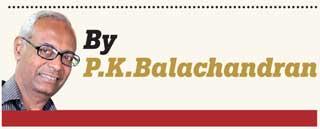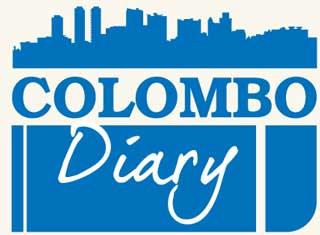Reply To:
Name - Reply Comment
 Sri Lanka’s last king, Sri Vikrama Rajasinha of Kandy, was vilified as a cruel despot and was overthrown by the British in 1815, acting in cahoots with disgruntled local chieftains. But King Rajasinha was a creative builder, town-planner and an executor of irrigation projects for the benefit of the common man.
Sri Lanka’s last king, Sri Vikrama Rajasinha of Kandy, was vilified as a cruel despot and was overthrown by the British in 1815, acting in cahoots with disgruntled local chieftains. But King Rajasinha was a creative builder, town-planner and an executor of irrigation projects for the benefit of the common man.
 In the latter part of his politically troubled reign (1798-1815), King Rajasinha had turned all his energies towards making his capital city, Kandy, a “cosmic city” fit for God Sakra, the Sinhala version of the Hindu God Indra.
In the latter part of his politically troubled reign (1798-1815), King Rajasinha had turned all his energies towards making his capital city, Kandy, a “cosmic city” fit for God Sakra, the Sinhala version of the Hindu God Indra.
Kandy lost its luster after the British takeover in 1815. The British showed scant regard for King Rajasinha’s renovated city. According to Prof. Gerald Peiris, the British intelligence chief, John D’Oyly, who masterminded the coup of 1815, made the king’s palace his residence. Many buildings in the temple-palace complex were turned into military barracks. The Magul Maduwa (the Audience Hall) became an Anglican chapel and later a court of law. The Pattiruppuwa (an octagonal pavilion, one of three main structures which comprise the Dalada Maligawa) was desecrated. A part of the Malwatte monastery premises became a military hospital and an Anglican church came up. John Day wrote in his work Account of the Interior of Ceylon published in 1821, that the British hoped that “not a vestige of the old town will remain, and an English town will rise on the ground it at present occupies.”
Though the British wish was not realised, Kandy town did lose its “celestial” character. But there is now a ray of hope that it will recover some its past glory with the US Government giving US$ 265,000 for the renovation of the kings’ Palace and the Archaeology Museum located within the Dalada Maligawa complex.
Renovation project
|
Sri Vikrama Rajasinha |
The saga of Vikrama Rajasinha’s exploits in the field of reconstruction is told engaging by Gananath Obeyesekere in his book The Doomed King: A Requiem for Sri Vikrama Rajasinha (2017). Kandy had been extensively destroyed by British troops in the 1803-04 war. Even the Dalada Maligawa suffered damage. As a devout Buddhist King Rajasinha began his renovation project by repairing the Dalada Maligawa. He put up the Pattiruppuwa, “the eight sides of which represented the eight directions of the universe with the monarch at the center.”
By the end of 1810 he had converted the Bogambara marsh into a lake which was used by devotees to bathe before entering the Dalada Maligawa. According to the civil servant cum historian R. L. Brohier King Rajasinha was struck by the idea that he should be able to walk from his palace to the Malwatta Vihara. He ordered his chief architect to build a “bund” over the intervening soggy paddy fields. “The water, which the bund eventually held, turned out to be a beautiful lake which pleased the king. He named it ‘Kiri Muhuda’ which means sea of milk,” Brohier wrote.
According to Ingirisi Hatana, a valuable source of material on the reign of King Rajasinha, the king had the length and breadth of the city surveyed. What came up on the land were “as if it were the work of Vishvakarma (the divine architect).” The water in the lake resembled the milk ocean (Kiri muhuda). The palace (Vimana) was “fit for God Sakra.” There were 12 streets, one of which was the Svarna Kalyana Street (Golden Pleasant Street). In the words of the Ingirisi Hatana: “The streets were replete with arches and other sights and were bustling with people.
Beside the large lake, were attractive red lotuses in full bloom. Honey bees hummed and golden geese played in the water full of fish. The rice field and gardens bloomed as if they were the Nandana Gardens of the God Sakra. The city shimmered with silver and gold pinnacles with little openings (kavulu) in the shape of a lion’s mouth.”
Kandy was Sirivardhana (Overflowing with prosperity), where, according to Ingirisi Hatana, “resides Sri Vikrama Rajasinha, the noble lord of Lanka as he appeared full decked in ornaments and wearing a golden crown such as that he is like the radiant God Purandara himself.”
Obeyesekere says that the king was also a compulsive builder of dams, ponds and irrigation reservoirs, all for the common good.
Controversial Project
However, the renovation of Kandy was highly controversial in the Seven Korales (present-day Kurunegala district) and also the Four Korales. This was because King Rajasinha was commandeering labour from there. The anti-king monk, Hurukgommuwa Unnanse, told British spy John D’Oyly that people were rounded up, bound and taken away to work in Kandy. Molligoda, the Disawe of the Four Korales, was collecting people at the rate of two or three per family and “sending them forcibly”. He “tore down the roofs of some men who absconded.” One of British spy D’Oyly’s informants told him that the people were “waiting for the English to take over Kandy.”
However, Obeyesekere does not attribute opposition in the Seven and Four Korales to forced labor but to the fact that the people were suffering from diseases at that time and there were crop failures too. In 1806 there had been a revolt which Vikrama Rajasinha crushed.
British Eyed Kandy
The British had been eyeing the Kandy kingdom ever since Fredrick North became Governor in 1798. They began exploiting divisions between King Rajasinha and his politically ambitious Adigars and chiefs. They seized Kandy by force in 1803 and 1804 but failed to retain control. However, the British saw to it that Kandy suffered extensive damage. On his part, King Rajasinha treated the rebel chiefs mercilessly, which led to the propaganda that he was a sadist.
Unfased by the defeat in 1803-04, British Governors Thomas Maitland and Robert Brownrigg, continued with the campaign to overthrow the king. Oyly sowed seeds of discontent among officials and chiefs of the Fourth and Third Korales where the British were influential. He sold the notion that King Rajasinha is an alien Tamil oppressor of the Sinhalese.
However, Obeyesekere insists that despite the anti-king leanings of the top officials and chiefs, ordinary people were supportive of the king. They were dismayed when the British captured the kingdom. The British wanted to make their takeover of Kandy in 1815 a public spectacle. But the people ignored the event, not even coming out to the streets to witness the military parade. In fact, some of the local chiefs who handed over power to the British on a platter in 1815, themselves rose in rebellion against them in 1817-1818. The British reaction to the rebellion had a devastating effect on Uva-Wellassa.